It is hard not to be impressed by the deployment of forces that Mercury Marine put in place to enable us to thoroughly test the new Mercury V10 Verado, in its 350 and 400 HP versions. As many as 20 boats, and a considerable number of engines, were in fact at our disposal for two days in the legendary and evocative setting of Lake X: the secret location where Mercury tests all its new products.
An unmissable opportunity then, to analyze in the smallest detail the actual performance of the new Mercury V10 Verado. The following is in fact a comparative super test that will compare the actual performance of these new outboard engines, when installed in single or multiple configurations.
General remarks
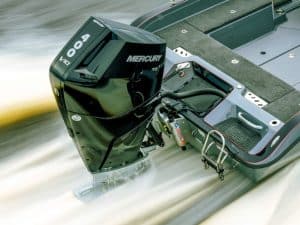
During these days dedicating ample time to test all performance measures, I also sought out to test the two new powerplants by simulating various cruising speeds, thus discovering this new feature, which is decidedly unusual for engines that have become famous for their performance.
The advantage of this is clear: outboards will no longer be chosen according to their intended use (sport or cruising) because, having the two features in a single, technologically advanced powerplant, there is no longer any need for that.
This means that with the new Mercury V10 Verado at the stern, you can either enjoy “playing around” and performing evolutions driven by a raging outboard (with a crazy sound), or do long cruises, even at high average speeds, with very little consumption. Furthermore, the new engines are also very quiet (if we don’t enjoy electronically opening the exhausts), which makes it easy to predict that these engines simply have no competition in today’s market.
During testing, 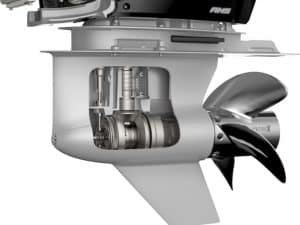
The new Verado V10s also boast an unprecedented torque, which is discharged into the water very efficiently by the new four-blade Evolution X propellers and the new, hydrodynamic gearbox. Two innovations that, as you will see from the individual test tables, mean that these thrusters are capable of greater performance for the same power output. This is demonstrated by the accelerations and top speeds achieved in these test days, which, as you will see, are almost excessive given the ability of these engines to transform power into real performance!
Tests
Quad Verado V10 400 setup on Boston Whaler 380 Outrage
Accelerating from 0 to 30 knots in less than 9 seconds is the calling card of this quad Mercury Verado V10 400 setup. The sensation of thrust is incredible, you are simply crushed to the seat while the GPS shows increasing speeds as if it were a video game. In just over 25 seconds we are already at 60 knots which, as we have already said, is almost too much for an average yachtsman. Fortunately, we are aboard one of the best centre consoles on the American market, a boat with an excellent hull that brilliantly succeeds in ‘taming’ such great power.
I set off at cruising speed, the rumble disappears and leaves room for a pleasant, restrained sound. At this speed I discover that at 4,000 rpm I am going more than 35 knots (41 mph) while consuming only 5.64 litres per mile (0.8 miles per gallon) which, with 1,600 horsepower in the stern and more than 10 tonnes of weight (22,000 lbs) in running order, is very little.
Test Data
| SPEED | CONSUMPTION | ||||||
| RPM | MPH | KNOTS | GALLONS/HOUR | L/H | MILES/GALLONS | L/NM | SINGLE ENGINE l/h |
| 650 | 4 | 3.5 | 4.4 | 16.7 | 0.9 | 4.79 | 4.2 |
| 1000 | 6.8 | 5.9 | 7.2 | 27.3 | 0.9 | 4.61 | 6.8 |
| 1500 | 9 | 7.8 | 12.5 | 47.3 | 0.7 | 6.05 | 11.8 |
| 2000 | 10.1 | 8.8 | 21.7 | 82.1 | 0.5 | 9.36 | 20.5 |
| 2500 | 11.1 | 9.6 | 28.2 | 106.7 | 0.4 | 11.07 | 26.7 |
| 3000 | 15.6 | 13.6 | 37.3 | 141.2 | 0.4 | 10.41 | 35.3 |
| 3500 | 31.5 | 27.4 | 43.3 | 163.9 | 0.7 | 5.99 | 41.0 |
| 4000 | 41 | 35.6 | 53.2 | 201.4 | 0.8 | 5.65 | 50.3 |
| 4500 | 47.2 | 41.0 | 71.1 | 269.1 | 0.7 | 6.56 | 67.3 |
| 5000 | 54 | 46.9 | 84.6 | 320.2 | 0.6 | 6.82 | 80.1 |
| 5500 | 59.9 | 52.1 | 106.5 | 403.1 | 0.6 | 7.74 | 100.8 |
| 6000 | 64.5 | 56.0 | 120.4 | 455.7 | 0.5 | 8.13 | 113.9 |
| 6350 | 68.5 | 59.5 | 133 | 503.4 | 0.5 | 8.46 | 125.9 |
| Boat dry weight | Acceleration | ||||||
| lbs | 14,500 | 0-20 mph | 0 – 17.3 knots | 5.26 sec | |||
| kg | 6,577 | 0-30 mph | 0 – 26.0 knots | 7.85 sec | |||
Triple Verado V10 350 setup on Scout 355 LXF
The Scout 355 LXF is another iconic American centre console that, by chance, I had the chance to test in Miami a few years ago. On that occasion the boat was propelled with the same power even though the outboards were from another manufacturer. Re-reading now my notes from that time, the advantage of the new Verado V10 350s in terms of speed with the same power is about 10% (58.7 vs 54.4 knots or 67.6 vs 62.6 mph), which is no small thing.
The new Verado 350s, which in this case are in triple setup, push like mad, you really struggle to perceive the difference in power compared to their bigger brothers. Acceleration is scorching, only 8.38 seconds to 30 mph (26 knots) and the feeling of being pushed back is practically the same as with the 400. At the throttles you have to be careful because the speeds are immediately important, at 4,500 rpm we are already above 40 knots and at full throttle, i.e. at 6,350 rpm, the GPS marks 58.7 knots (67.6 mph).
The consumption of the Mercury V10 Verado 350 is obviously even lower than that of its bigger brothers, at full throttle the single engine never goes over 110 litres/hour (29 galls/h) while the best cruising speed is found at 4,000 rpm where we navigate at the very respectable speed of 33.7 knots consuming only 43.9 litres/hour (17.4 galls/hour) per engine. Very little indeed compared to performance.
Data test
| SPEED | CONSUMPTION | ||||||
| RPM | MPH | KNOTS | GALLONS/HOUR | L/H | MILES/GALLONS | L/NM | SINGLE ENGINE l/h |
| 650 | 3.3 | 2.9 | 2.7 | 10.2 | 1.2 | 3.56 | 3.4 |
| 1000 | 7,ì.2 | 6.3 | 5.4 | 20.4 | 1.3 | 3.27 | 6.8 |
| 1500 | 9.6 | 8.3 | 9.4 | 35.6 | 1.0 | 4.26 | 11.9 |
| 2000 | 10.9 | 9.5 | 16.4 | 62.1 | 0.7 | 6.55 | 20.7 |
| 2500 | 13.1 | 11.4 | 19.5 | 73.8 | 0.7 | 6.48 | 24.6 |
| 3000 | 17.6 | 15.3 | 24.8 | 93.9 | 0.7 | 6.14 | 31.3 |
| 3500 | 30.2 | 26.2 | 28.9 | 109.4 | 1.0 | 4.17 | 36.5 |
| 4000 | 38.8 | 33.7 | 34.8 | 131.7 | 1.1 | 3.91 | 43.9 |
| 4500 | 46 | 40.0 | 41.7 | 157.8 | 1.1 | 3.95 | 52.6 |
| 5000 | 51.5 | 44.8 | 47.4 | 179.4 | 1.1 | 4.01 | 59.8 |
| 5500 | 56.4 | 49.0 | 67.7 | 256.2 | 0.8 | 5.23 | 85.4 |
| 6000 | 63.3 | 55.0 | 82 | 310.4 | 0.8 | 5.64 | 103.5 |
| 6350 | 67.6 | 58.7 | 88.8 | 336.1 | 0.8 | 5.72 | 112.0 |
| Boat dry weight | Acceleration | ||||||
| lbs | 9,800 | 0-20 mph | 0 – 17,3 knots | 5.34 sec | |||
| kg | – | 0-30 mph | 0 – 26,0 knots | 8.38 sec |
Single Verado V10 400 on Ranger 622
I’ll tell you straight away: this test was the most adrenaline-pumping and fun of all. Sitting practically on the surface of the water on a boat of less than 7 metres and 2 tonnes, with 400 horsepower in the stern and literally flying over the water at more than 60 knots (70mph), is an unforgettable experience. The acceleration is impressive, every time we push the throttle hard, we reach astounding speeds in a blink of an eye. There are four of us on board, all professionals, but needless to say, this engine wins us over and we don’t want to stop.
But the new V10 Verado also manages to amaze me in this test because, once our adrenaline thirst has been quenched and the throttle has been pulled back, it is also able to give us superb cruising comfort. Cruising at 30 knots, with very little noise and revs, is indeed a unique pleasure. If we then think that, even in this case, we are only consuming 40 litres per hour, then you will understand why this new engine really does pack two in one.
However, the pleaure is because, as soon as we our needed data analytics, we are back on the throttle. On the other hand, it is a Verado, and it was born to run!
Test Data
| SPEED | CONSUMPTION | |||||
| RPM | MPH | KNOTS | GALLONS/HOUR | L/H | MILES/GALLONS | L/NM |
| 650 | 3.9 | 3.4 | 1 | 3.8 | 3.9 | 1.12 |
| 1000 | 5.7 | 5.0 | 1.8 | 6.8 | 3.2 | 1.38 |
| 1500 | 8.2 | 7.1 | 3.5 | 13.2 | 2.3 | 1.86 |
| 2000 | 11.8 | 10.3 | 5.8 | 22.0 | 2.0 | 2.14 |
| 2500 | 15.3 | 13.3 | 6.7 | 25.4 | 2.3 | 1.91 |
| 3000 | 24.9 | 21.6 | 8.2 | 31.0 | 3.0 | 1.43 |
| 3500 | 34.3 | 29.8 | 11.1 | 42.0 | 3.1 | 1.41 |
| 4000 | 39.4 | 34.2 | 13 | 49.2 | 3.0 | 1.44 |
| 4500 | 45.1 | 39.2 | 17.5 | 66.2 | 2.6 | 1.69 |
| 5000 | 51.6 | 44.8 | 23.1 | 87.4 | 2.2 | 1.95 |
| 5500 | 61.1 | 53.1 | 27.8 | 105.2 | 2.2 | 1.98 |
| 6000 | 69.7 | 60.6 | 31.5 | 119.2 | 2.2 | 1.97 |
| 6201 | 70.1 | 60.9 | 33.5 | 126.8 | 2.1 | 2.08 |
| Boat dry weight | Acceleration | |||||
| lbs | 2650 | 0-20 mph | 0 – 17.3 knots | 4.25 sec | ||
| kg | 1202 | 0-30 mph | 0 – 26.0 knots | 6.86 sec |
Single Verado V10 350 on SeaRay 260 SLX
Now we come to a test that I really enjoyed, both because we were on board a really beautiful boat and because this match was perfect. The new SeaRay SLX 260 is a ‘little big boat’ that, in just 8 metres, provides the same comfort as a 10-metre boat or more. This is also demonstrated by the incredible number of people on board, no less than nine, all of them comfortably seated!
I estimate our weight in running order to be around 4 tonnes and, with some doubts about the overall weight, I start to speed up. The Mercury Verado V10 350 seems to have read my mind because, even in these conditions, it immediately makes me realize what it is made of by pulling the hull out of the water in an instant, as if we were twigs. From zero to 30 knots in about 10 seconds, not bad really for the situation we’re in. Then I put the throttles down and, in another handful of seconds, we are already well over 40 knots, the autotrim is performing brilliantly and the GPS shows a top speed of 46.6 knots (53.6 mph)!
I leave the helm to a colleague and go and sit on the stern. I sink into this luxurious sofa (what a boat, guys) and while my colleagues are enjoying themselves, I realize that, even with the outboard at no more than 2 metres, the noise level is considerably low.
Then my colleague at the helm electronically opens the exhaust and, he too, throttles down. The unmistakable sound of the Mercury reaches my ears as the boat accelerates fast on the water and a stupid smile appears on my face. Yes I know, I do the most wonderful job in the world …
Test Data
| SPEED | CONSUMPTION | |||||
| RPM | MPH | KNOTS | GALLONS/HOUR | L/H | MILES/GALLONS | LNM |
| 650 | 3.2 | 2.8 | 0.9 | 3.4 | 3.6 | 1.23 |
| 1000 | 5.4 | 4.7 | 1.7 | 6.4 | 3.2 | 1.37 |
| 1500 | 7.4 | 6.4 | 2.8 | 10.6 | 2.6 | 1.65 |
| 2000 | 8.8 | 7.6 | 5 | 18.9 | 1.8 | 2.47 |
| 2500 | 10.4 | 9.0 | 7.1 | 26.9 | 1.5 | 2.97 |
| 3000 | 16.6 | 14.4 | 9.3 | 35.2 | 1.8 | 2.44 |
| 3500 | 26.1 | 22.7 | 10.3 | 39.0 | 2.5 | 1.72 |
| 4000 | 32.7 | 28.4 | 12.7 | 48.1 | 2.6 | 1.69 |
| 4500 | 37.8 | 32.8 | 15.7 | 59.4 | 2.4 | 1.81 |
| 5000 | 41.4 | 36.0 | 18.2 | 68.9 | 2.3 | 1.91 |
| 5500 | 46.4 | 40.3 | 26 | 98.4 | 1.8 | 2.44 |
| 6000 | 50.7 | 44.1 | 26.9 | 101.8 | 1.9 | 2.31 |
| 6201 | 53.6 | 46.6 | 28.8 | 109.0 | 1.9 | 2.34 |
| Boat Weight | Acceleration | |||||
| lbs | 5564 | 0-20 mph | 0 – 17.3 knots | 5.99 sec | ||
| kg | 2524 | 0-30 mph | 0 – 26.0 knots | 9.03 sec |

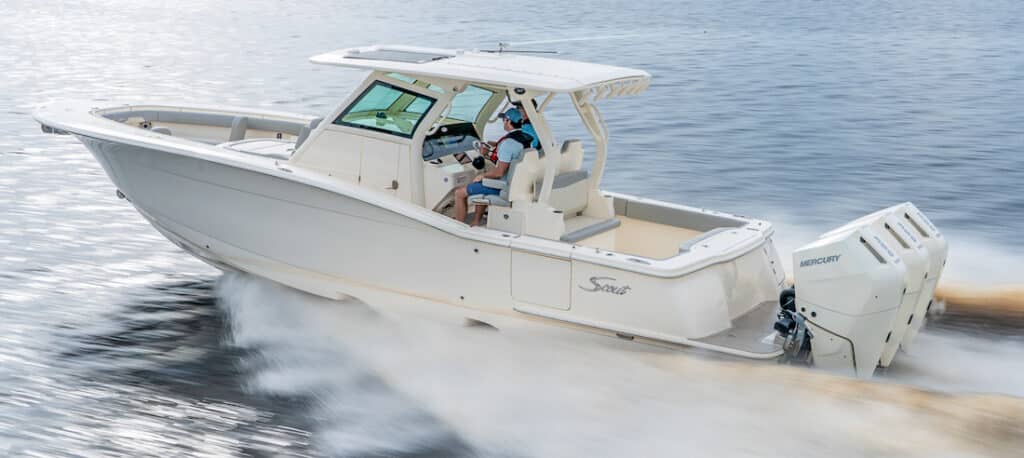
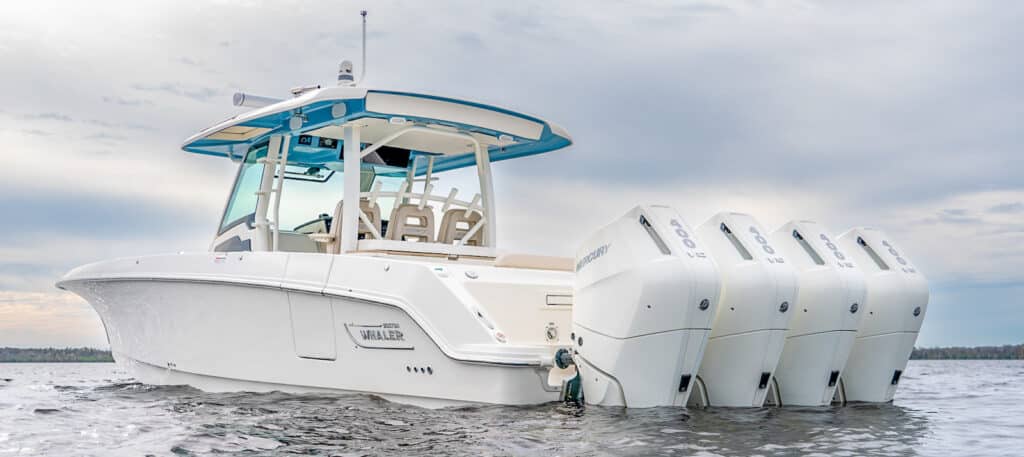
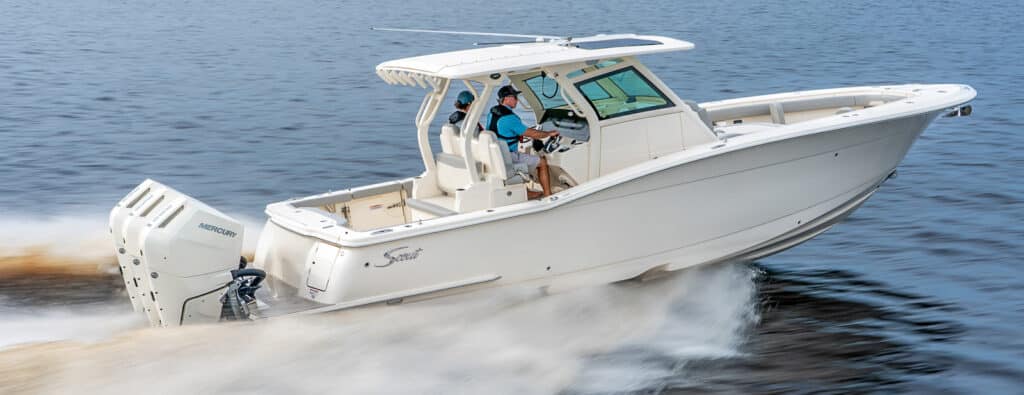
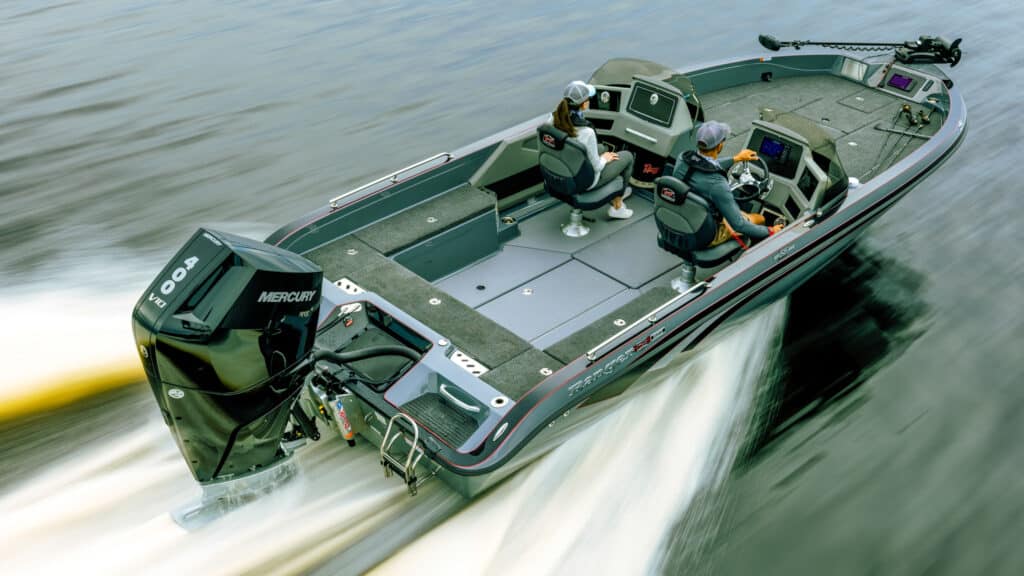
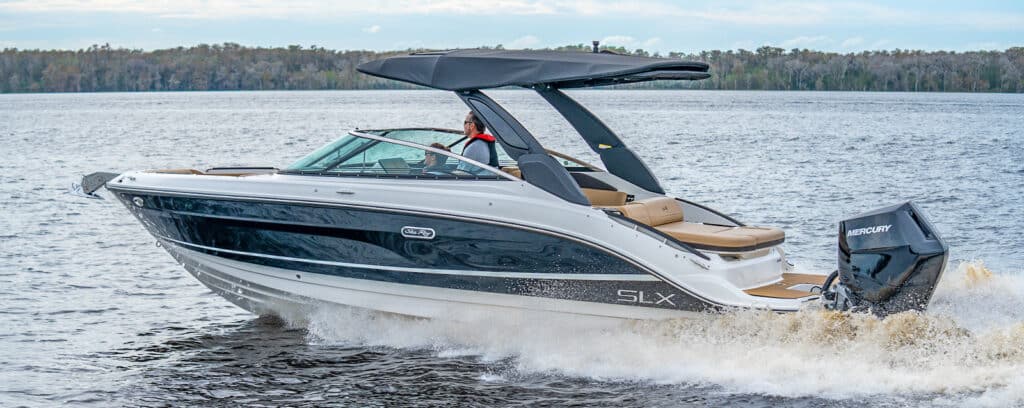














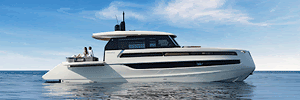





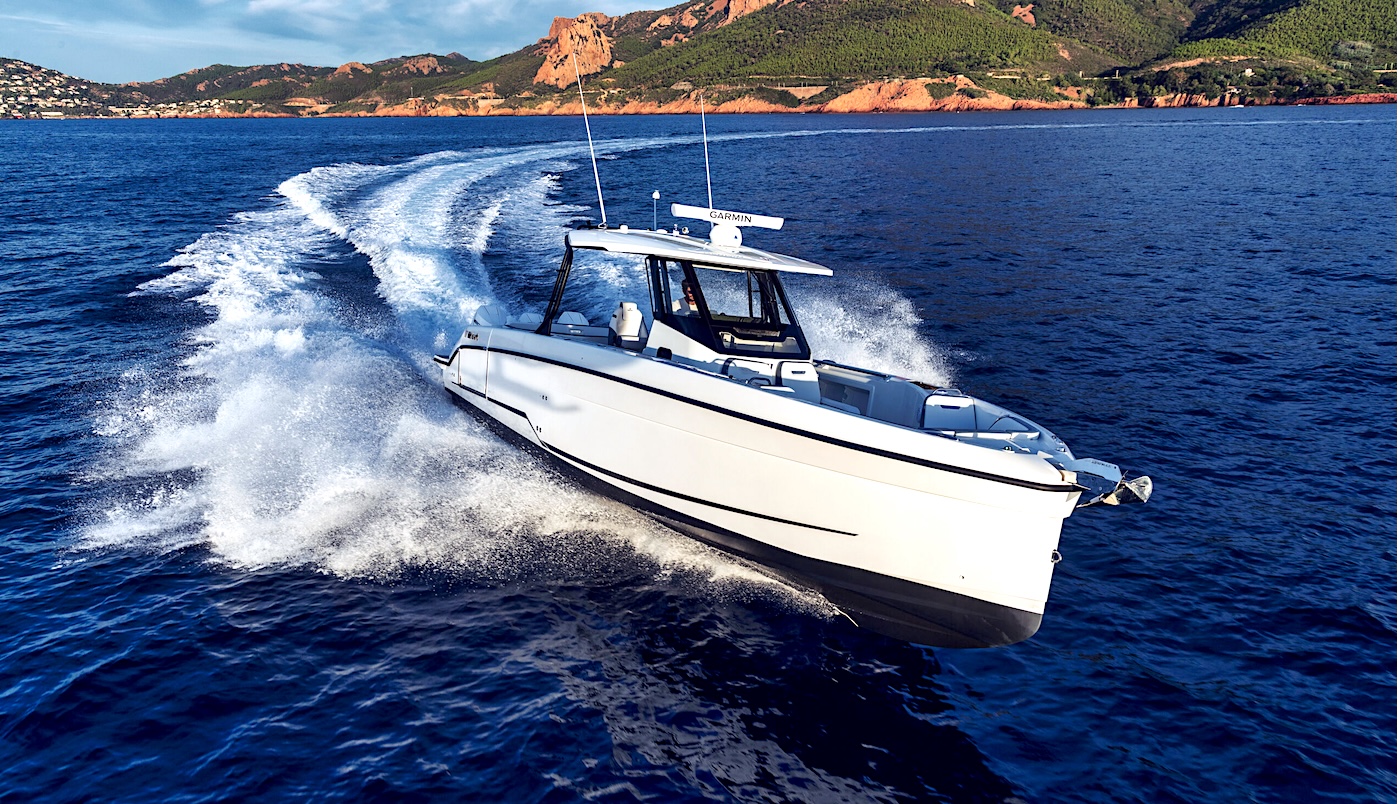
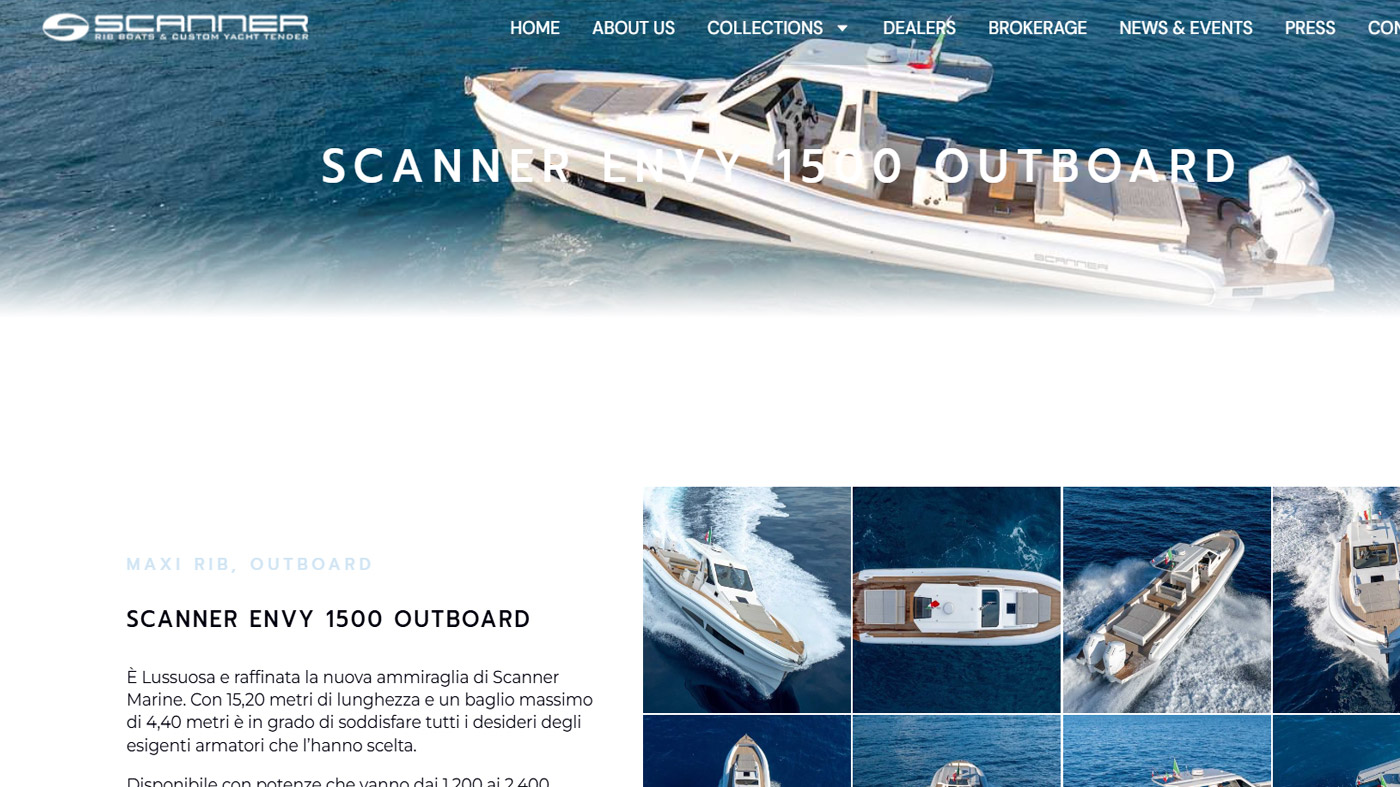

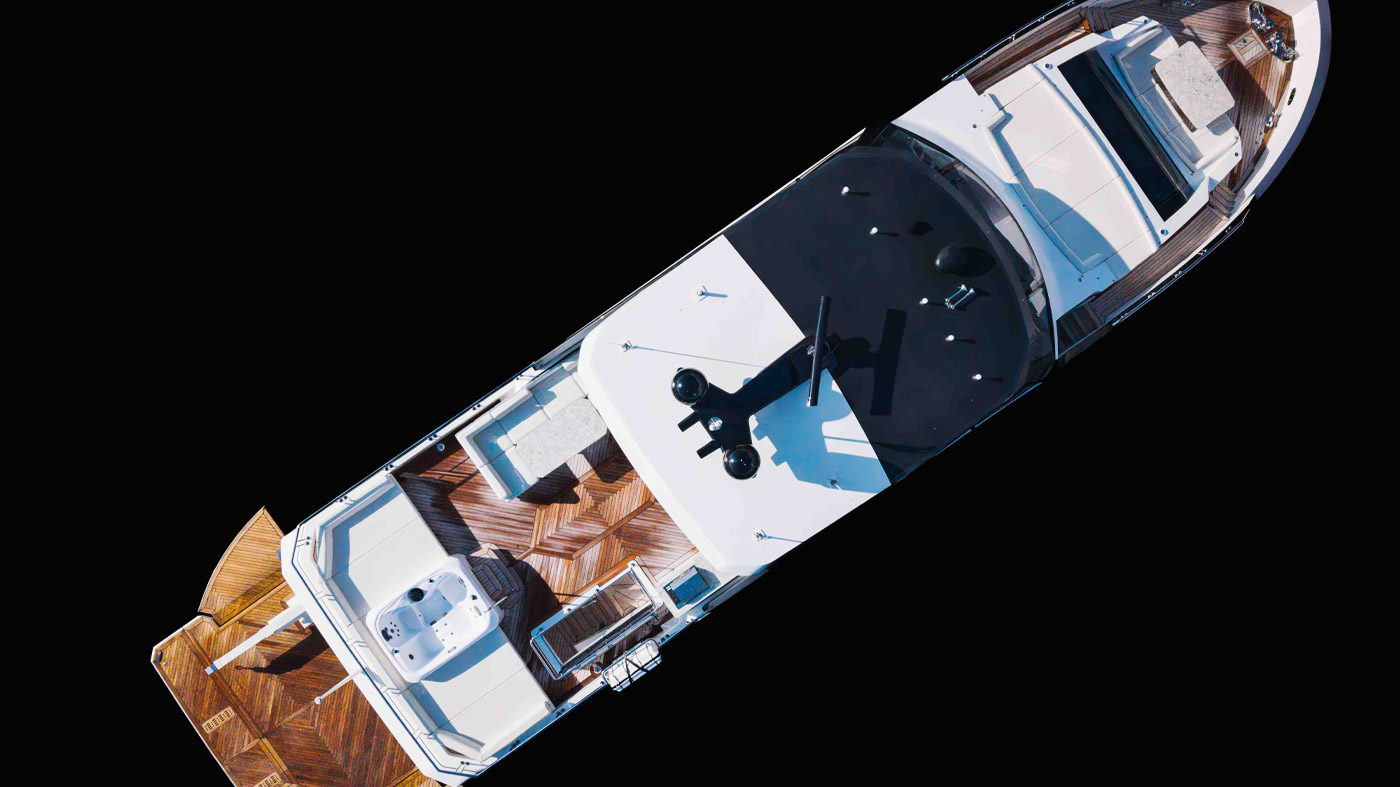

2 Responses
What a great engine love you can change oil and do everything on top that’s big being a charter captain I like the technology mercury has really knocked it out of park makings boating fishing a lot better born and raised in shrimp business I was running a boat fishing Mexico at 18 years old dad taught me young then got in charter business now 32 years been on the water a long time boats and fishing are my life and probably die doing it love what I do would not ever do anything else rock and roll
What pitch prop?